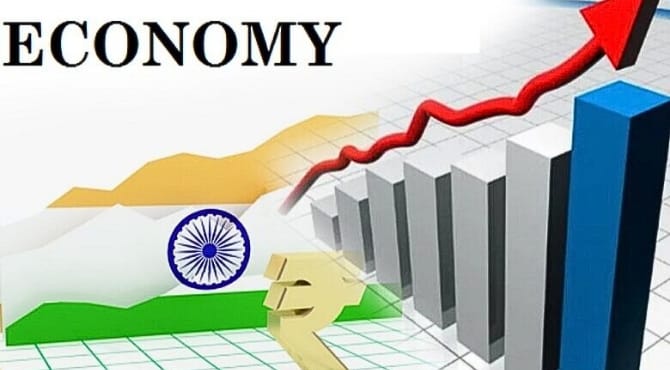The Indian economy is going through a strong consumption boom which is mainly a result of a series of strategic tax cuts that have considerably raised the prospects of GDP growth to around 8%. This economic rise is the outcome of a meticulously planned fiscal approach that seeks to increase people’s disposable income, ignite demand, and attract investment thereby creating a self-reinforcing growth cycle.
One of the essential factors that have led to this consumption explosion is the decrease in personal income tax rates. Personal income tax has been reduced substantially for middle and upper-income households, and now consumers have more money to spend, so their purchasing power goes up.
PIB data highlights that India’s GDP grew by 7.8% in the first quarter of FY26, surpassing expectations, boosted by manufacturing, services, and a broad-based consumption increase. Private consumption reached a two-decade high share in India’s GDP, rising from 60.2% in FY24 to 61.4% in FY25, with private final consumption expenditure growing at 7.2% in FY25 over 5.6% the previous year, driven partly by rural demand rebound and wage growth
This has been instrumental in the growth of retail sales, including the sale of durable goods, automobiles, and consumer electronics. As a result, the private final consumption expenditure increased by more than 7% in the last few fiscal periods, compared to the previous annual growth rates of around 5.5-6%. This growth in consumer spending is behind a large part of GDP since consumption accounts for the largest share of India’s economic activity.
The retail and e-commerce sales spiked sharply during the recent festive season, complemented by a rise in bank credit, indicating growing consumer confidence and spending power. The government’s GST rationalization and multiple tax reductions, including personal income tax cuts, have led to increased disposable incomes. These measures contributed to buoyant consumption despite global uncertainties such as tariffs, making the Indian economy resilient and propelling it towards an 8% growth benchmark
At the same time, large-scale reductions in corporate income taxes have had the effect of invigorating businesses to increase their output, recruit more staff, and provide capital for new projects. The resulting growth in employment, especially in the organized sectors and manufacturing, strengthens the rise in income, which thus increases consumer demand. In addition to that, the government has used tax incentives to encourage economic transaction formalization, which has enabled compliance, and widened the tax base, thus making it possible for government revenue to be sustained indirectly while there are lower rates.
Besides that, a major factor contributing to the boom of consumption is the reform of the Goods and Services Tax (GST) system. Rate cuts targeted at key consumption sectors not only have decreased input costs for businesses but also final prices for consumers. This is a major factor in raising demand in such segments as textiles, automobiles, and consumer goods, which are not only labor-intensive but also have significant forward and backward linkages in the economy. The collections of GST revenue have always met or even exceeded the set targets, which is a sign of better compliance, increased consumption, and a growing formal economy.
The revival of rural consumption goes hand in hand with the urban demand and is mainly the result of the growth of agricultural incomes, better rural wages, and government welfare schemes. Credit availability has also been enhanced and continues to play a pivotal role in the financial institution sector by allowing rural households and small businesses to access credit, thus enabling them to spend and invest in these regions and become empowered. The deepening of the consumption base not only adds to economic resilience but also accelerates the growth momentum by allowing the benefits to be spread among different demographic and geographic segments.
The growth of investment, which has been motivated by an improved business mood following the tax cuts and policy reforms, acts as a synergistic factor. With the increase in the profitability of companies, they are enabled to put money back into the economy in the form of infrastructure, technology, and/or capacity expansion. If it is coupled with consumption-led demand, this results in a feedback loop that heralds a higher GDP growth trajectory.
The tax reforms under the Modi Sarkar injected over Rs 1 lakh crore directly into the hands of the middle class through personal income tax cuts alone. This fiscal stimulus is projected to boost consumption by nearly 10%, with a multiplier effect on GDP close to 2.7%. Additionally, GST cuts have enhanced consumption further, especially in labor-intensive and employment-generating sectors such as textiles, automobiles, and consumer electronics, reinforcing domestic demand and investment cycles
To sum up, the consumption boom financed through tax cuts is evident in the rise of disposable incomes, business profitability, compliance, and formalization, rural demand revival, and investment activity. These linked factors have together generated a sustainable growth pattern that may result in India’s GDP reaching a level of 8% expansion. The accomplishment of this model highlights the efficiency of demand-side fiscal strategies that are customized for India’s distinct economic structure and demographic profile.









